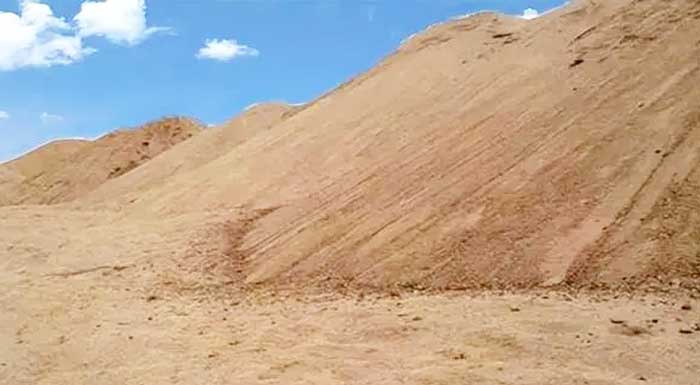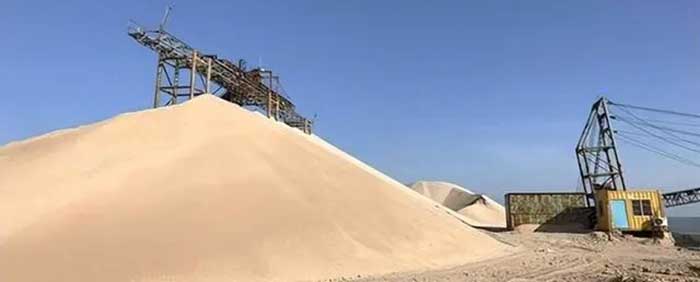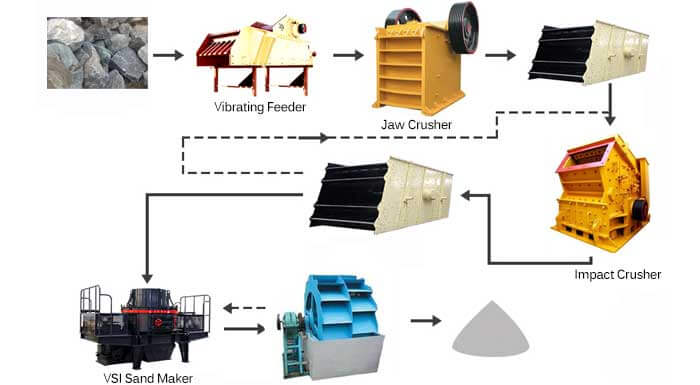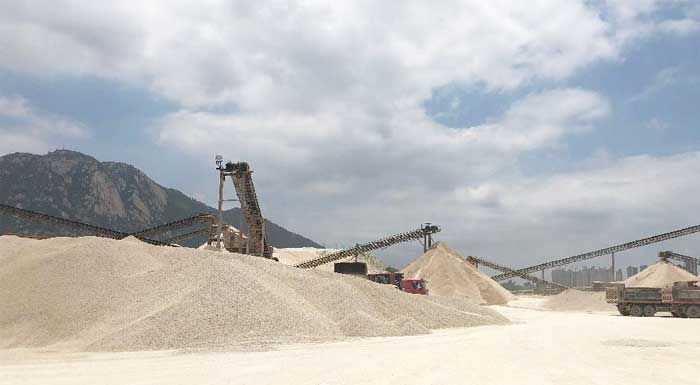How To Reduce Mud Content of Building Sand
The reasons for the high mud content in building sand during the production process are as follows: excessive weathered interlayers of stone materials, low strength of stone materials, resulting in excessive mud content in the production of sand and stone aggregates, or failure to adjust the eccentric block of the vibrating screen, failure to set a buffer material on the vibrating screen, and unreasonable layout of drainage pipes.

The Influence of High Mud Content on Concrete
- 1. Causing an increase in water demand, reducing the gripping force of cement slurry on coarse aggregate, resulting in a decrease in the compactness of concrete and thus reducing its strength. (Generally, if the mud content of sand exceeds 2%, it will have adverse effects on the strength of concrete)
- 2. The additive has an adsorption effect on the concrete, affecting its firmness and causing a significant decrease in slump.
- 3. Increasing the dry shrinkage of concrete, reducing the bonding strength of the concrete aggregate interface and the tensile strength of concrete, can easily cause concrete cracking.
- 4. Soil is not easy to participate in the hydration reaction, which can affect the normal hydration reaction of cement and easily lead to cracks inside the concrete, thereby reducing the durability of the concrete, making it prone to weathering, affecting its resistance to freeze-thaw and permeability, and shortening the service life of the concrete.
- 5. The internal friction between cement and crushed stone will decrease, while the internal stress will increase, leading to sliding cracking, reducing strength, and may also cause corrosion of steel bars, reducing their strength.
- 6. It affects the uniformity of concrete, forms an unsealed air space, and significantly reduces frost resistance. In freeze-thaw conditions, the shrinkage ratio is different from that of concrete, which affects its durability.

3 Methods To Reduce Mud Content of Building Sand
In the case of a shortage of building sand, reducing the mud content of sand and gravel is very important. Today, we will introduce 3 common methods to reduce the mud content of building sand.
1. Reduce Vibration Frequency of Vibrating Screen
The vibration frequency of the vibrating screen can be reduced by reducing the number of eccentric blocks on both sides of the vibrating screen. According to experimental investigation, if four eccentric blocks are reduced, the residence time of the building aggregate on the sieve increases from 30 seconds to 120 seconds, and the mud content of the aggregate also decreases from the original 5.3% to 3.8%. The mud content has been improved.
Therefore, the vibration frequency can be reduced by reducing the eccentric blocks of the vibrating screen, thereby reducing the mud content of the aggregate.
2. Add a Buffer Bucket
The mud content of the aggregate can be reduced by adding a buffer bucket, drilling holes in the diagonal steel of the vibrating screen, and fixing the screen with bolts to reduce the sliding speed of the aggregate. Adding a buffer bucket can increase the residence time of the aggregate in the sieve.
According to experiments, the retention time increased from 90 seconds to 150 seconds and the mud content decreased from 4.3% to 1.5% with the addition of a buffer bucket. The mud content was significantly reduced.
3. Add Drainage Pipes
The mud content of the aggregate can be reduced by adding drainage pipes, which can increase the drainage volume and thus increase the flushing intensity. According to the experimental results, adding a drainage pipe doubled the drainage capacity, and the mud content decreased from 1.5% to 1% to 0.2%, effectively reducing the mud content of the aggregate.

 Why Desert Sand Cannot be Used As Building Materials
Why Desert Sand Cannot be Used As Building Materials 10+ Rock Types That Can be Used As Building Materials
10+ Rock Types That Can be Used As Building Materials VSI Sand Making Machine | Working Principle & Applications
VSI Sand Making Machine | Working Principle & Applications Concrete Sand | How To Select Suitable Sand For Concrete
Concrete Sand | How To Select Suitable Sand For Concrete



